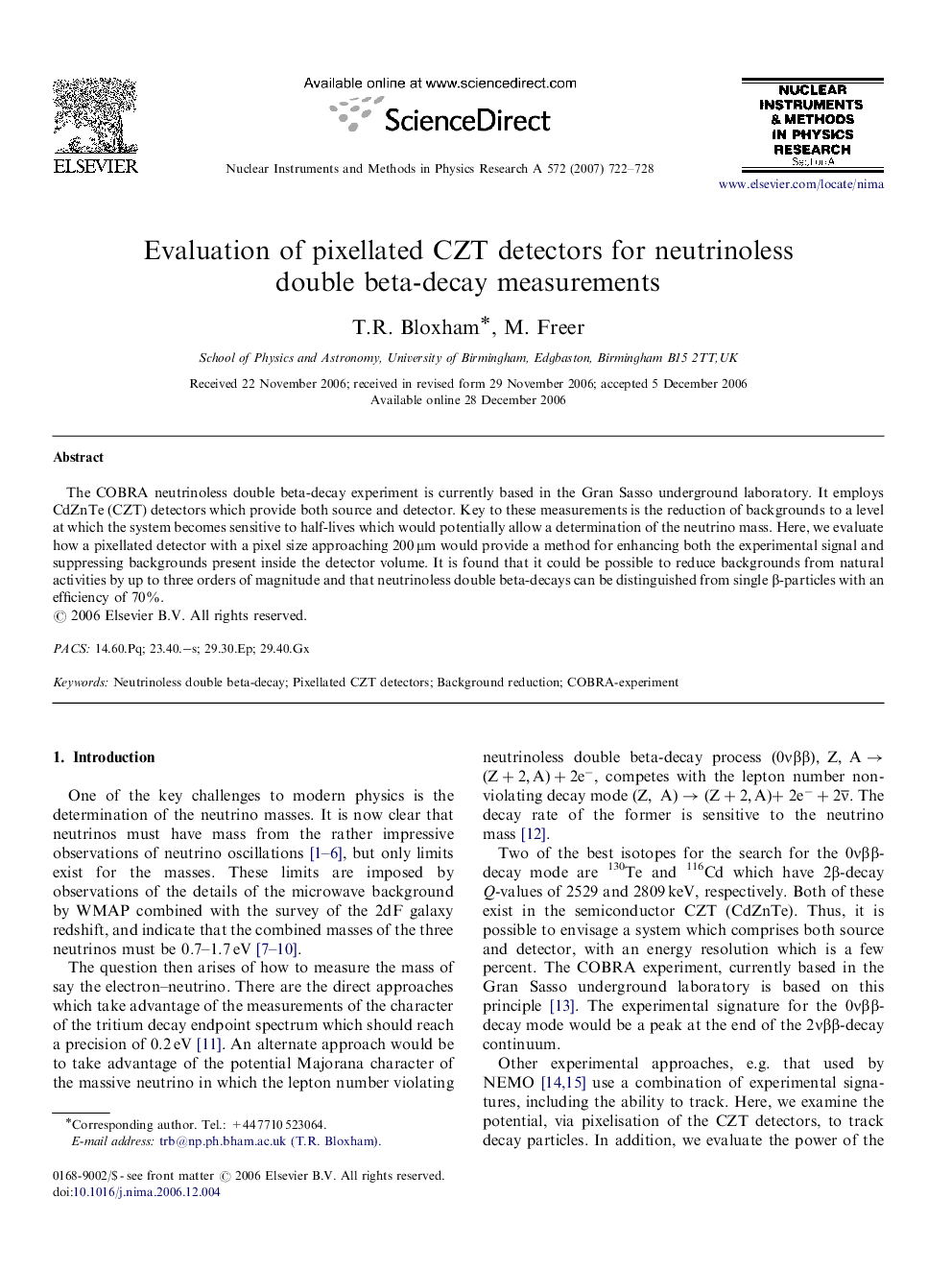| Article ID | Journal | Published Year | Pages | File Type |
|---|---|---|---|---|
| 1830914 | Nuclear Instruments and Methods in Physics Research Section A: Accelerators, Spectrometers, Detectors and Associated Equipment | 2007 | 7 Pages |
The COBRA neutrinoless double beta-decay experiment is currently based in the Gran Sasso underground laboratory. It employs CdZnTe (CZT) detectors which provide both source and detector. Key to these measurements is the reduction of backgrounds to a level at which the system becomes sensitive to half-lives which would potentially allow a determination of the neutrino mass. Here, we evaluate how a pixellated detector with a pixel size approaching 200μm would provide a method for enhancing both the experimental signal and suppressing backgrounds present inside the detector volume. It is found that it could be possible to reduce backgrounds from natural activities by up to three orders of magnitude and that neutrinoless double beta-decays can be distinguished from single ββ-particles with an efficiency of 70%%.
